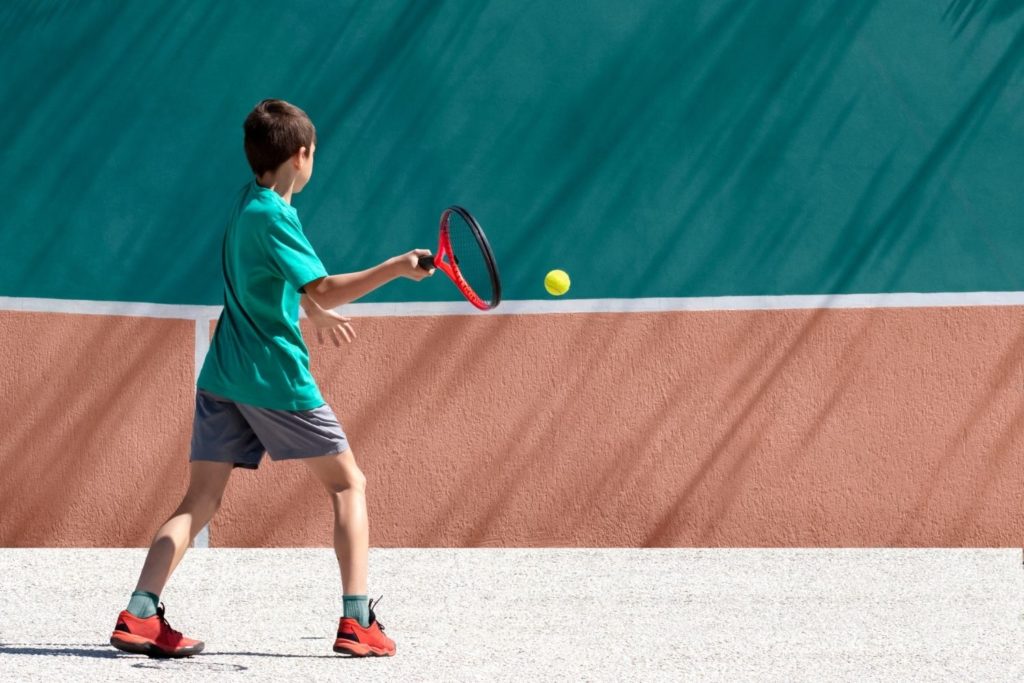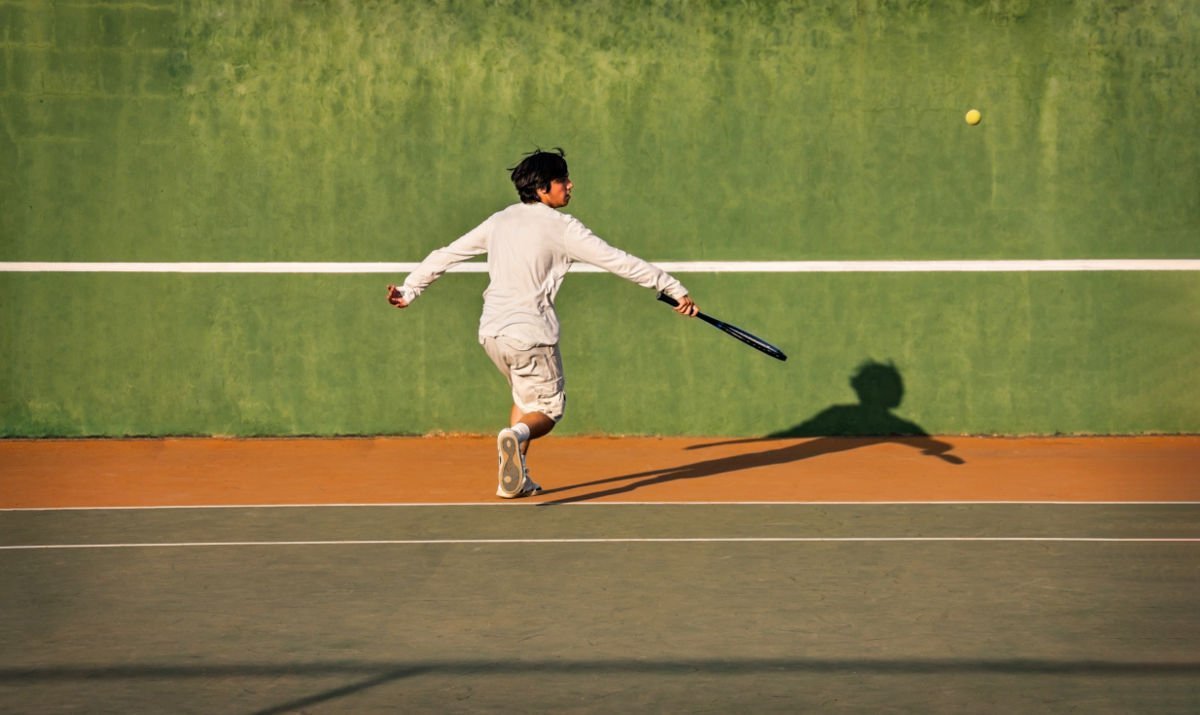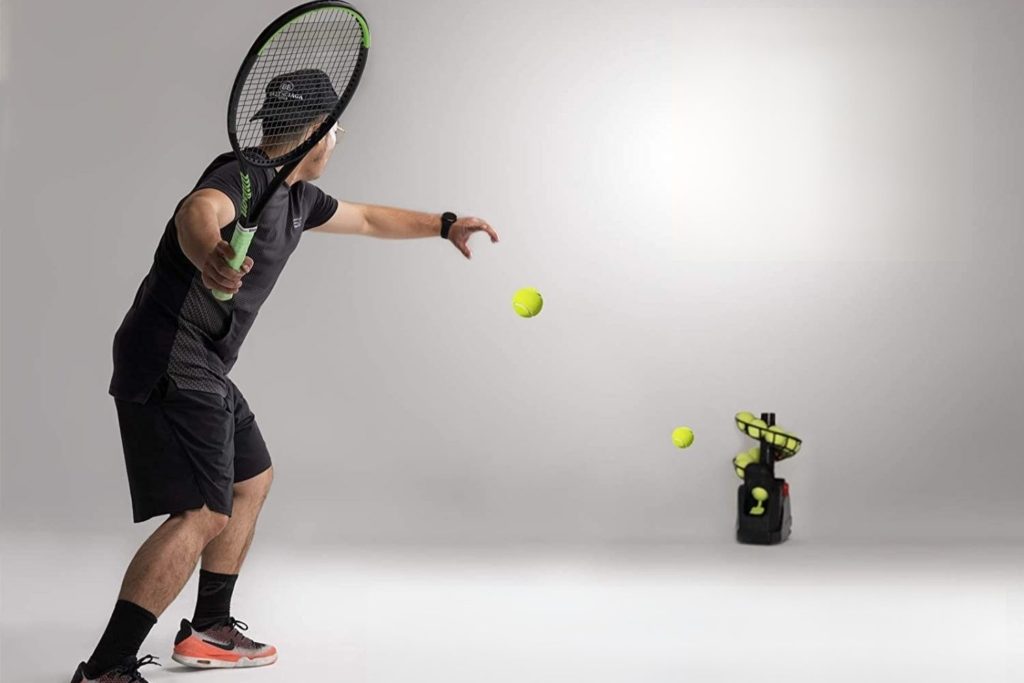Table Of Contents
- How to Enhance Your Tennis Performance When Playing Alone
- Maximizing Your Practice Sessions: Tips for Solo Tennis Practice
- Solo Tennis Drills for On-Court Practice Sessions
- Utilizing a Ball Machine for Solo Training Sessions
- Exploring the Benefits of Solo Tennis Trainers
- Enhance Your Skills with a Tennis Rebounder Net
- Preparing Your Body for Optimal Tennis Performance
- Mental Preparation: Getting in the Right Mindset for Your Matches
- The Power of Tennis Mental Training for Self-Improvement
- Drawing Inspiration from Accomplished Tennis Players
- Embrace Solo Tennis: The Path to Perfecting Your Skills through Practice
How to Enhance Your Tennis Performance When Playing Alone
When it comes to tennis, solo practice can be a valuable tool for improving your skills. Here are some effective strategies to enhance your performance when playing alone:
- Importance of solo practice for skill development: Solo practice allows you to focus on specific aspects of your game, fine-tuning your techniques and improving your overall performance.
- Setting specific goals for improvement: Identify areas in your game that require enhancement, such as footwork, shot accuracy, or consistency, and set measurable goals to track your progress.
- Structuring your practice sessions effectively: Divide your practice time into segments, dedicating each segment to a particular skill or drill. This approach helps you maintain focus and maximize the effectiveness of your practice sessions.

Maximizing Your Practice Sessions: Tips for Solo Tennis Practice
To get the most out of your solo tennis practice, consider the following tips:
- Warming up and stretching to prevent injuries: Begin your practice sessions with a thorough warm-up routine to prepare your muscles for the demands of the game. Incorporate stretching exercises to improve flexibility and reduce the risk of injuries.
- Incorporating a variety of drills to target different aspects of the game: Mix up your practice routine by including drills that focus on agility and footwork, solo volleys and overheads, and working on shot placement and spin variations.
- Monitoring and analyzing your performance for self-assessment: Record your practice sessions or use a tennis tracking app to assess your technique, identify areas for improvement, and track your progress over time.
The Impact of Wall Hitting on Tennis Skill Development
Practicing against a wall can have a significant impact on your tennis skills. Here’s why:
- Benefits of practicing against a wall: Hitting against a wall provides a consistent and reliable rebound, allowing you to work on your timing, coordination, and shot consistency.
- Improving footwork, timing, and shot accuracy: Hitting against a wall helps develop your footwork, as you need to adjust your positioning and movement to meet the ball accurately. It also sharpens your timing and shot accuracy.
- Utilizing different hitting techniques for specific skills: Experiment with various strokes, such as topspin forehands, slice backhands, and volleys, to improve your proficiency in different shot types.

Beginner-Friendly Tennis Wall Drills to Enhance Your Game
Here are some beginner-friendly wall drills to incorporate into your solo practice sessions:
- Basic forehand and backhand drills: Stand a short distance from the wall and practice hitting forehand and backhand shots, focusing on proper technique, follow-through, and consistency.
- Developing control and consistency in shots: Gradually increase the pace and intensity of your shots while maintaining control and consistency. Focus on hitting clean and accurate shots repeatedly.
- Progressing to advanced wall drills for more challenging practice: As you become more comfortable with basic wall drills, challenge yourself with advanced drills that involve incorporating footwork, movement, and shot variations.

Solo Tennis Drills for On-Court Practice Sessions
On-court solo drills can help you improve your skills and simulate game scenarios. Consider incorporating the following drills into your practice routine:
- Agility and footwork exercises: Set up agility ladders, cones, or markers on the court and perform footwork drills, such as ladder drills and cone drills, to improve your speed, agility, and court coverage.
- Solo volley and overhead drills: Practice volleys and overhead shots against a wall or use a rebounder net to simulate game-like situations. Focus on technique, positioning, and timing.
- Working on shot placement and spin variations: Use target areas on the court or markers to practice hitting shots with specific placement and spin. Experiment with topspin, slice, and flat shots to add variety to your game.
Serve Improvement: Targeted Tennis Drills for Self-Practice
Enhance your serving skills through targeted solo practice drills:
- Solo serve technique drills: Focus on the different components of your serve, such as the toss, grip, and swing motion. Break down the serve into smaller segments and practice each part individually to improve your overall technique.
- Practicing different types of serves: Work on developing a variety of serves, including flat serves, kick serves, and slice serves. Practice serving to different areas of the service box to enhance your accuracy and placement.
- Enhancing power, accuracy, and placement: Incorporate serve-specific drills that emphasize generating power while maintaining accuracy and placement. Use targets or markers to practice hitting serves in specific zones of the service box.
Utilizing a Ball Machine for Solo Training Sessions
Using a ball machine can significantly enhance your solo practice sessions. Here’s why it’s beneficial:
- Benefits of using a ball machine for solo practice: A ball machine allows you to receive consistent shots at varying speeds and angles, closely simulating real game situations.
- Creating realistic game scenarios: Set the ball machine to replicate different shots you encounter during matches, such as groundstrokes, volleys, and lobs. This helps you develop effective responses to different shot types.
- Adapting settings to focus on specific skills: Adjust the ball machine settings to target specific areas of your game, such as increasing the pace for practicing quick reactions or adjusting the feed height to improve your net play.

A Guide to Using Tennis Ball Machines for Serve Return Training
Exploring the Benefits of Solo Tennis Trainers
Solo tennis trainers can be valuable tools for self-improvement. Consider the following benefits:
- Overview of solo tennis training devices: Solo tennis trainers, such as rebound boards, portable hitting targets, and swing trainers, provide opportunities to practice stroke mechanics, muscle memory, and specific tennis movements.
- Improving stroke mechanics and muscle memory: Utilize solo tennis trainers to refine your strokes, develop muscle memory, and enhance your overall technique.
- Enhancing hand-eye coordination and reaction time: Incorporate solo trainers that require quick reactions and precise coordination to improve your hand-eye coordination and reaction time.
Enhance Your Skills with a Tennis Rebounder Net
Incorporating a rebounder net into your solo practice sessions can provide several benefits:
- Benefits of incorporating a rebounder net in solo practice: A rebounder net offers a versatile training tool for practicing volleys, groundstrokes, and reflexes, allowing you to develop consistency and adaptability in your shots.
- Practicing volleys, groundstrokes, and reflexes: Utilize the rebounder net to practice volleys and groundstrokes, adjusting your position and footwork to maintain a rally. The net also helps improve your reflexes and quick reactions.
- Adding variety to your training routine: Incorporating a rebounder net into your practice sessions adds variety and challenges, helping you stay motivated and engaged.

Preparing Your Body for Optimal Tennis Performance
Physical conditioning is crucial for solo tennis players. Consider the following strategies to prepare your body:
- Importance of physical conditioning for solo players: Build strength, endurance, and agility through regular workouts to improve your overall fitness level and withstand the physical demands of the game.
- Strength and endurance exercises for tennis-specific movements: Focus on exercises that target tennis-specific movements, such as lunges, lateral movements, and core strengthening exercises. Incorporate strength training and cardiovascular exercises into your fitness routine.
- Injury prevention strategies and proper recovery techniques: Prioritize injury prevention by incorporating warm-up and cool-down routines, stretching exercises, and proper technique. Additionally, allow sufficient time for rest and recovery to avoid overuse injuries.
Mental Preparation: Getting in the Right Mindset for Your Matches
Your mental state plays a significant role in your performance. Consider the following strategies for mental preparation:
- Developing focus, confidence, and mental resilience: Cultivate mental skills such as focus, concentration, self-belief, and resilience through mental training exercises. Practice mindfulness and visualization techniques to improve mental clarity and enhance performance under pressure.
- Visualization and positive self-talk techniques: Visualize successful performances and use positive self-talk to boost confidence and motivation. Create a mental image of yourself executing shots with precision and success.
- Managing pre-match nerves and pressure: Develop strategies to manage pre-match nerves and pressure, such as deep breathing exercises, positive affirmations, and pre-match routines. Maintain a balanced perspective and embrace the challenge of competition.
The Power of Tennis Mental Training for Self-Improvement
Incorporating mental training exercises into your routine can have a profound impact on your game. Consider the following benefits:
- Enhancing concentration and decision-making skills: Mental training exercises, such as focus drills and decision-making simulations, sharpen your ability to concentrate during matches and make sound decisions under pressure.
- Overcoming performance anxiety and maintaining motivation: Mental training techniques help you manage performance anxiety, maintain motivation, and overcome mental obstacles that may hinder your progress and enjoyment of the game.
Drawing Inspiration from Accomplished Tennis Players
Learn from the success stories of tennis legends and apply their insights to your own game:
- Learning from the success stories of tennis legends: Study the techniques, strategies, and mindset of accomplished tennis players. Watch their matches, read their biographies, and analyze their gameplay to gain valuable insights.
- Analyzing their techniques and strategies: Observe the technical aspects of their strokes, their tactical decisions, and their approach to different situations during matches. Identify elements that align with your playing style and incorporate them into your game.
- Applying their insights to your own game: Adapt the lessons learned from tennis legends to suit your own style and strengths. Experiment with new techniques and strategies in practice and gradually incorporate them into your matches.
Embrace Solo Tennis: The Path to Perfecting Your Skills through Practice
Solo practice is a valuable and effective method for improving your tennis skills. Embrace the following approaches to maximize your progress:
- Emphasizing the value of solo practice for improvement: Recognize the significance of solo practice in developing your skills, technique, and overall game.
- Building a consistent practice schedule: Establish a regular practice routine that includes both on-court drills and off-court conditioning. Consistency is key to achieving long-term progress.
- Enjoying the process and tracking your progress: Embrace the joy of practicing and the journey of self-improvement. Keep track of your progress, celebrate milestones, and appreciate the incremental improvements you make over time.
Remember, solo practice allows you to focus on specific aspects of your game, improve your technique, and enhance your overall performance. By incorporating a variety of drills, utilizing training tools, and developing your mental and physical preparation, you can elevate your solo tennis skills and excel on the court. Enjoy the process and strive for continuous improvement in your game!

